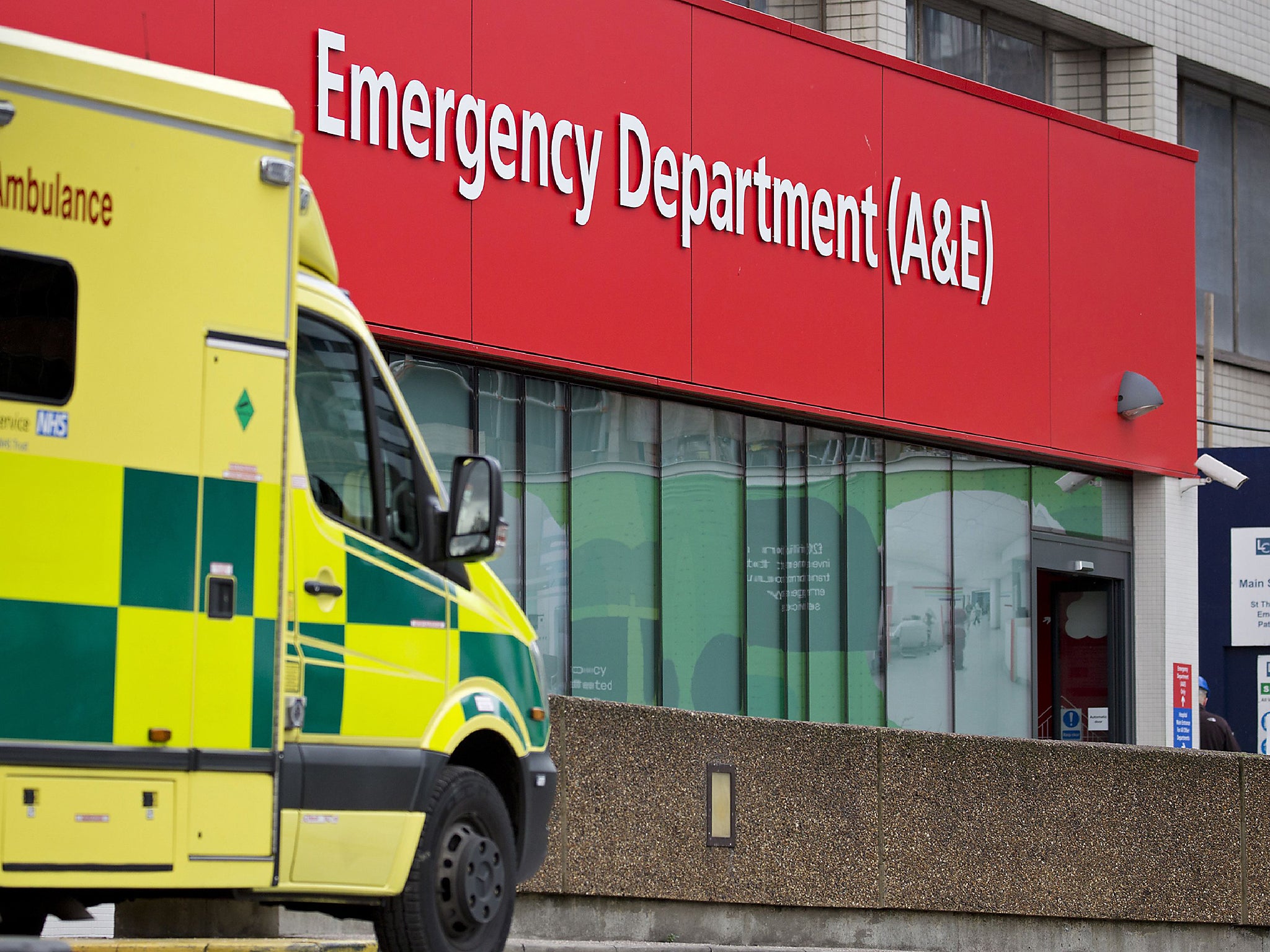A&E departments working ‘beyond limits of resilience’, emergency chiefs warn as waits grow
‘Large numbers of patients are being cared for in undignified conditions in corridors, at greater risk of hospital acquired infections,’ RCEM chief executive Gordon Miles says

Your support helps us to tell the story
From reproductive rights to climate change to Big Tech, The Independent is on the ground when the story is developing. Whether it's investigating the financials of Elon Musk's pro-Trump PAC or producing our latest documentary, 'The A Word', which shines a light on the American women fighting for reproductive rights, we know how important it is to parse out the facts from the messaging.
At such a critical moment in US history, we need reporters on the ground. Your donation allows us to keep sending journalists to speak to both sides of the story.
The Independent is trusted by Americans across the entire political spectrum. And unlike many other quality news outlets, we choose not to lock Americans out of our reporting and analysis with paywalls. We believe quality journalism should be available to everyone, paid for by those who can afford it.
Your support makes all the difference.The performance of A&E departments in some trusts is below levels set in last year’s record-breaking winter crisis, according to emergency medicine bosses who warn staff and bed shortages mean hospitals are “at or beyond the limits of their resilience”.
Despite milder weather and the absence of a major flu outbreak, which added to 2018’s “perfect storm” of pressures, the Royal College of Emergency Medicine (RCEM) has said conditions in A&E are “grave indeed”.
RCEM chief executive Gordon Miles said that pressures on beds mean “large numbers of patients are being cared for in undignified conditions in corridors, at greater risk of hospital acquired infections”.
To address this hospitals are relying on “record numbers” of temporary doctors and nurses, he added.
NHS England publishes weekly winter data on ambulance waits and bed pressures across every English trust, but the RCEM produces a UK snapshot from around a third of hospitals – with more than 50 respondents in all.
While the NHS is seeing more patients at A&E than ever before, and successfully cutting numbers stuck in hospital uneccessarily, the latest RCEM Winter Flow Project report shows that just 77 per cent of patients were seen or sent home within four hours of attending A&E.
This is well below the target of 95 per cent and even falls short of the 85 per cent threshold below which the RCEM warns patients and staff are at the “highest level of risk”.
The college says it is “even more concerning” that unlike last year performance has continued to slide after early January – the point where winter pressures are traditionally at their peak.
“This suggests that while the staff in our departments are striving to keep patients safe, those departments are at or beyond the limits of their resilience,” Mr Miles said.
The winter flow report is voluntary and does not provide as exhaustive a picture as the NHS’s own data, but medical leaders said recent coverage of severe ambulance delays show pressure is mounting.
Dr Nick Scriven, president of the Society for Acute Medicine said: “I fear these are the high profile tips of the iceberg of stress and strain on our NHS.
“The relentless upbeat messages from central NHS are hiding the true picture and we again find ourselves saying that comparisons to the ‘crisis’ last year are invalid.”
A spokesperson for NHS England said: “NHS staff have been going to extraordinary lengths, battling snowy and icy conditions and increasing norovirus and flu cases to provide patients with the quality care they need.
“It is thanks to their hard work and dedication that, despite more people going to hospital than last year, A&E departments have been more resilient, and more people are getting the support they need to return home quickly.”
Join our commenting forum
Join thought-provoking conversations, follow other Independent readers and see their replies
Comments